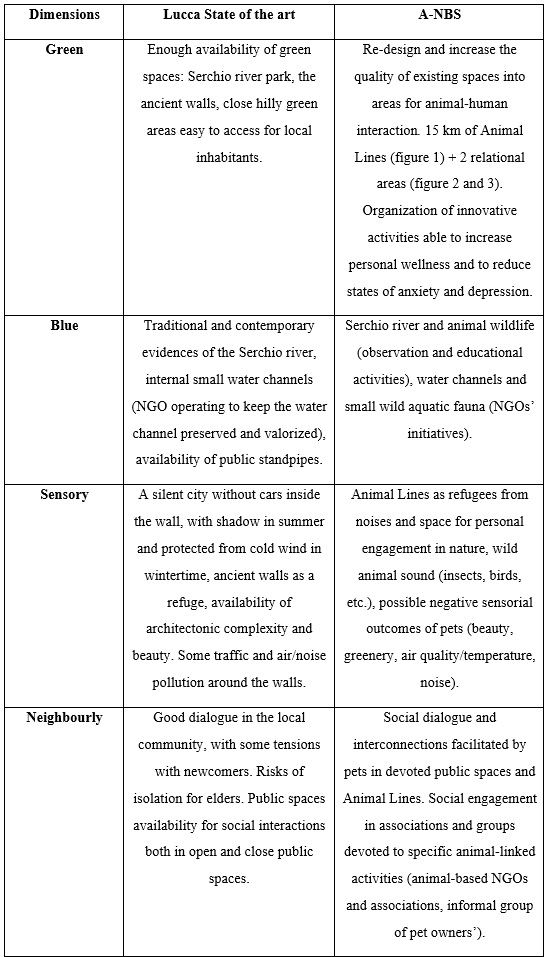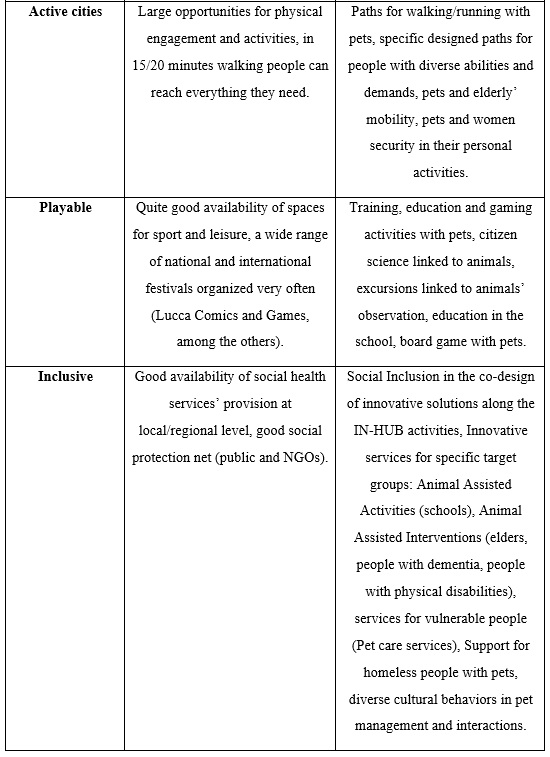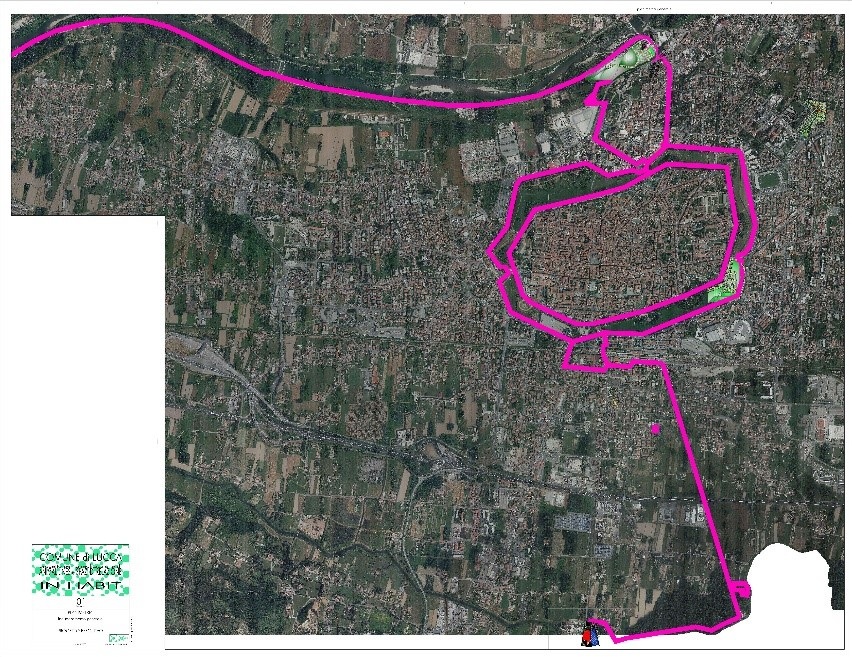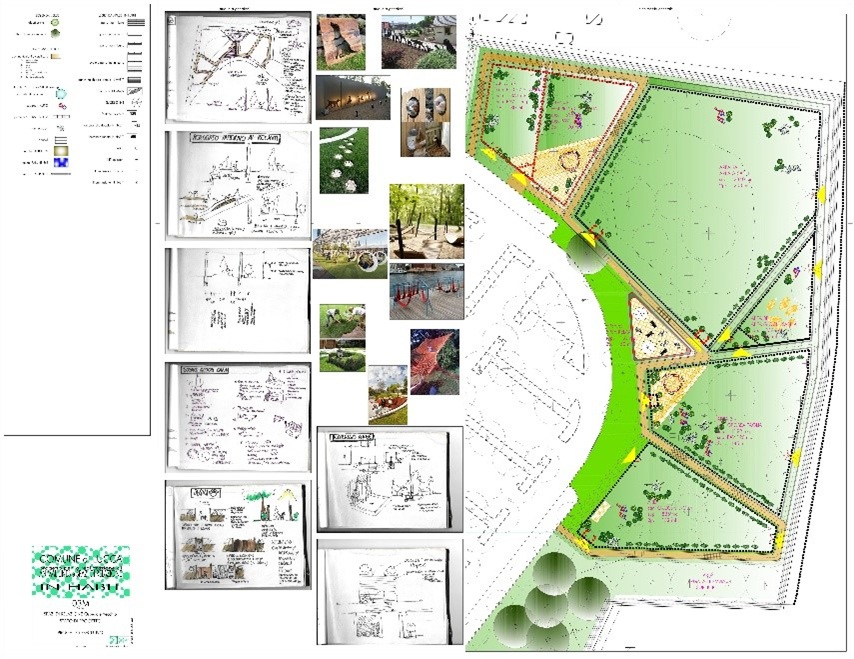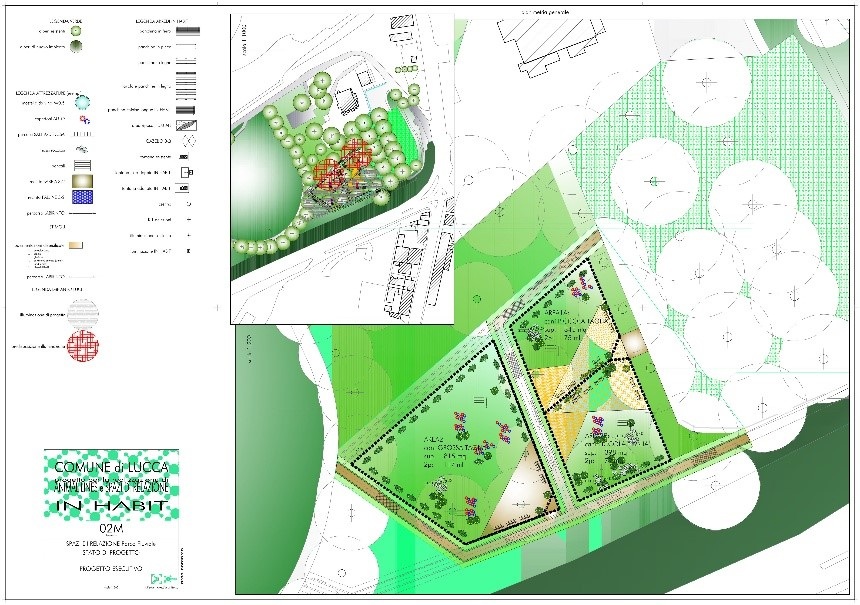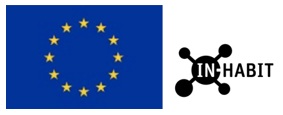Albert, C., Brillinger, M., Guerrero, P., Gottwald, S., Henze, J., Schmidt, S., Ott, E., & Schröter, B. (2021). Planning Nature-Based Solutions: Principles, Steps, and Insights. Ambio, 50(8), 1446-1461. https://doi.org/10.1007/s13280-020-01365-1
American Bird Conservancy. (n.d.). Expanding Bird Conservation Across the Americas. Authors. https://abcbirds.org/bird-city-network/
Audretsch, D. B., Eichler, G. M., & Schwarz, E. J. (2022). Emerging Needs of Social Innovators and Social Innovation Ecosystems. International Entrepreneurship and Management Journal, 18(1), 217-254. https://doi.org/10.1007/s11365-021-00789-9
Bauman, A. E., Russell, S. J., Furber, S. E., & Dobson, A. J. (2001). The Epidemiology of Dog Walking: An Unmet Need for Human and Canine Health. Medical Journal of Australia, 175(11-12), 632-634. https://doi.org/https://doi.org/10.5694/j.1326-5377.2001.tb143757.x
Bert, F., Gualano, M. R., Camussi, E., Pieve, G., Voglino, G., & Siliquini, R. (2016). Animal Assisted Intervention: A Systematic Review of Benefits and Risks. European Journal of Integrative Medicine, 8(5), 695-706. https://doi.org/https://doi.org/10.1016/j.eujim.2016.05.005.
Bonifacio, M. (2014). Social Innovation: A Novel Policy Stream or a Policy Compromise? An EU Perspective. European Review, 22(1), 145-169. https://doi.org/doi:10.1017/S1062798713000707
Borrelli, C., Granai, G., Di Iacovo, F., Riggio, G. ., Rovai, M., Moruzzo, R., Riccioli, F., Bibbiani, C., Gazzano, A., & Mariti, C. (2022). The Benefits of Dog Ownership on People as an Undervalued Resource in Urban Environments. Dog Behavior, 3, 21-39.
Braje, T. J. (2011). The Human-Animal Experience in Deep Historical Perspective. In T. J. Braje (Ed.), The Psychology of the Human-Animal Bond; a Resource for Clinicians and Researchers (pp. 62-80). Springer Science.
Bulliet, R. W. (2005). Hunters, Herders, and Hamburgers: The Past and Future of Human-Animal Relationships. Columbia University Press. http://www.jstor.org/stable/10.7312/bull13076
Bulsara, M., Wood, L., Giles-Corti, B., & Bosch, D. (2007). More Than a Furry Companion: The Ripple Effect of Companion Animals on Neighborhood Interactions and Sense of Community. Society & Animals, 15(1), 43-56. https://doi.org/https://doi.org/10.1163/156853007X169333
Butler, W. H. (2012). Welcoming Animals Back to the City: Navigating the Tensions of Urban Livestock through Municipal Ordinances. Journal of Agriculture, Food Systems, and Community Development, 2(2), 193-215. https://doi.org/http://dx.doi.org/10.5304/jafscd.2012.022.003
Canfield, M. L. (2014). Backyards as Borderlands: Humans, Animals, and Urban Food Production. University of Georgia.
Christian, H., Westgarth, C., Bauman, A., Richards, E., Rhodes, R., Evenson, K., Mayer, J., & Thorpe, R. J. (2013). Dog Ownership and Physical Activity: A Review of the Evidence. Journal of Physical Activity and Health, 10(5), 750-759. https://doi.org/10.1123/jpah.10.5.750
Cohen-Shacham, E., Walters, G., Janzen, C., & Maginnis, S. (2016). Nature-Based Solutions to Address Global Societal Challenges. IUCN, Gland, Switzerland. https://doi.org/https://doi.org/10.2305/IUCN.CH.2016.13.en
Coleman, K. J., Rosenberg, D. E., Conway, T. L., Sallis, J. F., Saelens, B. E., Frank, L. D., & Cain, K. (2008). Physical Activity, Weight Status, and Neighborhood Characteristics of Dog Walkers. Preventive Medicine, 47(3), 309-312. https://doi.org/10.1016/j.ypmed.2008.05.007
Conover, M. R. (1997). Wildlife Management by Metropolitan Residents in the United States: Practices, Perceptions, Costs, and Values. Wildlife Society Bulletin, 25, 306-311.
Conover, M. R., Pitt, W. C., Kessler, K. K., DuBow, T. J., & Sanborn, W. A. (1995). Review of Human Injuries, Illness, and Economic Losses Caused by Wildlife in the United States. Wildlife Society Bulletin, 23(3), 407-414. https://www.jstor.org/stable/3782947
Cunningham, A. A., Daszak, P., & Wood, J. L. N. (2017). One Health, Emerging Infectious Diseases and Wildlife: Two Decades of Progress? Philosophical Transactions of the Royal Society B: Biological Sciences, 372. https://doi.org/10.1098/rstb.2016.0167
Cupertino, M. C., Resende, M. B., Mayer, N. A. J., Carvalho, L. M., & Siqueira-Batista, R. (2020). Emerging and Re-Emerging Human Infectious Diseases. A Systematic Review of the Role of Wild Animals with a Focus on Public Health Impact. Asian Pacific Journal of Tropical Medicine, 13(3), 99-106. https://doi.org/10.4103/1995-7645.277535
Curl, A. L., Bibbo, J., & Johnson, R. A. (2017). Dog Walking, the Human-Animal Bond and Older Adults’ Physical Health. The Gerontologist, 57(5), 930-939. https://doi.org/https://doi.org/10.1093/geront/gnw051
Dall, P. M., Ellis, S. L. H., Ellis, B. M., Grant, P. M., Colyer, A., Gee, N. R., Granat, M. H., & Mills, D. S. (2017). The Influence of dog Ownership on Objective Measures of Free-Living Physical Activity and Sedentary Behaviour in Community-Dwelling Older Adults: A Longitudinal Case-Controlled Study. BMC Public Health, 17(1), 1-9. https://doi.org/https://doi.org/10.1186/s12889-017-4422-5
Derges, J., Lynch, R., Clow, A., Petticrew, M., & Draper, A. (2012). Complaints about Dog Faces as a Symbolic Representation Of Incivility in London, UK: A Qualitative Study. Critical Public Health, 22(4), 419-425. https://doi.org/10.1080/09581596.2012.710738
Egerer, M., & Buchholz, S. (2021). Reframing Urban “Wildlife” to Promote Inclusive Conservation Science and Practice. Biodiversity and Conservation, 30, 2255-2266. https://doi.org/https://doi.org/10.1007/s10531-021-02182-y
European Commission. (n. d.). Nature-based Solutions. Author. https://research-and-innovation.ec.europa.eu/research-area/environment/nature-based-solutions_en
Frantzeskaki, N., McPhearson, T., Collier, M. J., Kendal, D., Bulkeley, H., Dumitru, A., Walsh, C., Noble, K., Van Wyk, E., Ordóñez, C., Oke, C., & Pintér, L. (2019). Nature-Based Solutions for Urban Climate Change Adaptation: Linking Science, Policy, and Practice Communities for Evidence-Based Decision-Making. BioScience, 69(6), 455-466.
Friedmann, E., Katcher, A. H., Lynch, J. J., & Thomas, S. A. (1980). Animal Companions and One-Year Survival of Patients after Discharge from a Coronary Care Unit. Public Health Reports, 95(4), 307-312.
Friedmann, E., Katcher, A. H., Thomas, S. A., Lynch, J. J., & Messent, P. R. (1983). Social Interaction and Blood Pressure: Influence of Animal Companions. . The Journal of Nervous and Mental Disease, 171(8), 461-465. https://doi.org/https://doi.org/10.1097/00005053-198308000-00002
Friedmann, E., & Krause-Parello, C. A. (2018). Companion ANIMALS and Human Health: Benefits, Challenges, and the Road Ahead for Human-Animal Interaction. Rev Sci Tech, 37(1), 71-82. https://doi.org/10.20506/rst.37.1.2741
Friedmann, E., & Son, H. (2009). The Human-Companion Animal Bond: How Humans Benefit. Veterinary Clinics of North America - Small Animal Practice, 39(2), 293-326. https://doi.org/10.1016/j.cvsm.2008.10.015
Friedmann, E., & Thomas, S. A. (1995). Pet Ownership, Social Support, and One-Year Survival after Acute Myocardial Infarction in the Cardiac Arrhythmia Suppression Trial (CAST). The American Journal of Cardiology, 76(17), 1213-1217. https://doi.org/https://doi.org/10.1016/S0002-9149(99)80343-9
Friedmann, E., Thomas, S. A., Son, H., Chapa, D., & McCune, S. (2013). Pet’s Presence and Owner’s Blood Pressures during the Daily Lives of Pet Owners with Pre- to Mild Hypertension. Anthrozoös, 26(4), 535-550. https://doi.org/https://doi.org/10.2752/175303713X13795775536138
Garrity, T. F., Stallones, L. F., Marx, M. B., & Johnson, T. P. (1989). Pet Ownership and Attachment as Supportive Factors in the Health of the Elderly. Anthrozoös, 3(1), 35-44. https://doi.org/https://doi.org/10.2752/089279390787057829
Gazzano, A., Zilocchi, M., Massoni, E., & Mariti, C. (2013). Dogs’ features Strongly Affect People’s Feelings and Behavior toward Them. Journal of Veterinary Behavior, 8(4), 213-220. https://doi.org/https://doi.org/10.1016/j.jveb.2012.10.005
Hadidian, J. (2015). Wildlife in U.S. Cities: Managing Unwanted Animals. Animals, 5, 1092-1113. https://doi.org/10.3390/ani5040401
Ham, S. A., & Epping, J. (2006). Dog Walking and Physical Activity in the United States. Preventing Chronic Disease, 3(2), 1-7.
Hartig, T. (2004). Restorative environments. In C. Spielberg (Ed.), Encyclopedia of applied psychology (vol. 3, pp. 273-279). Academic Press. https://doi.org/http://dx.doi.org/10.1016/B0-12-657410-3/00821-7
Herzog, H. A., & Galvin, S. L. (1992). Animals, Archetypes, and Popular Culture: Tales from the Tabloid Press. Anthrozoös, 5(2), 77-92. https://doi.org/https://doi.org/10.2752/089279392787011494
Hinchliffe, S., & Bingham, N. (2008). People, Animals and Biosecurity in and Through Cities. In S. Harris Ali & R. Keil (Eds.), Networked Disease: Emerging infections in the global city (pp. 214-227). Wiley-Blackwell.
Howe, L., & Easterbrook, M. J. (2018). The Perceived Costs and Benefits of Pet Ownership for Homeless People in the UK: Practical Costs, Psychological Benefits and Vulnerability. Journal of Poverty, 22(6), 486-499. https://doi.org/https://doi.org/10.1080/10875549.2018.1460741
Kabisch, N., Frantzeskaki, N., & Hansen, R. (2022). Principles for Urban Nature-Based Solutions. Ambio. https://doi.org/10.1007/s13280-021-01685-w
Kaplan, R., & Kaplan, S. (1989). The Experience of Nature: A Psychological Perspective. Cambridge University Press.
Kock, R. (2014). Drivers of Disease Emergence and Spread: Is Wildlife to Blame? Onderstepoort Journal of Veterinary Research, 81(2), E1-4. https://doi.org/10.4102/ojvr.v81i2.739.
Krause-Parello, C. A. (2008). The Mediating Effect of Pet Attachment Support between Loneliness and General Health in Older Females Living in the Community. Journal of Community Health Nursing, 25(1), 1-14. https://doi.org/10.1080/07370010701836286
Kumar, S., & Singh, S. K. (2014). Biometric Recognition for Pet Animal. Journal of Software Engineering and Applications, 7, 470-482. https://doi.org/http://dx.doi.org/10.4236/jsea.2014.75044
Kumar, S., & Singh, S. K. (2018). Monitoring of Pet Animal in Smart Cities Using Animal Biometrics. Future Generation Computer Systems, 83, 553-563. https://doi.org/http://dx.doi.org/10.1016/j.future.2016.12.006
Lafortezza, R., Chen, J., van den Bosch, C. K., & Randrup, T. B. (2018). Nature-Based Solutions for Resilient Landscapes and Cities. Environmental Research, 165, 431-441. https://doi.org/10.1016/j.envres.2017.11.038
Lem, M., Coe, J. B., Haley, D. B., Stone, E., & O’Grady, W. (2016). The Protective Association between Pet Ownership and Depression among Street-involved Youth: A Cross-sectional Study. . Anthrozoös, 29(1), 123-136. https://doi.org/https://doi.org/10.1080/08927936.2015.1082772
Lindahl, J. (2016). Urban Animals - Feeding the Cities of the Future. Siani Policy brief, Swedish International Agricultural Network Initiative.
Louzã, A. C. (2007). The Sharing of Urban Areas by Man and Animals. In M. S. Pereira (Ed.), A Portrait of State-of-the-Art Research at the Technical University of Lisbon (pp. 479-488). Springer. https://doi.org/https://doi.org/10.1007/978-1-4020-5690-1_30
Maroto, F. (n. d.). Is There Room For pets in Smart Cities? [Blog]. WordPress. https://pacomaroto.wordpress.com/smart-cities-series/is-there-room-for-pets-in-smart-cities/
McClaskey, B. (2019). Companion Animals and their Impact on Human Lives. The Midwest Quarterly, 60(3).
McConnell, A. R., Brown, C. M., Shoda, T. M., Stayton, L. E., & Martin, C. E. (2011). Friends with Benefits: On the Positive Consequences of Pet Ownership. Journal of Personality and Social Psychology, 101(6), 1239-1252. https://doi.org/https://doi.org/10.1037/a0024506
McCormack, G., Rock, M., Toohey, A., & Hignell, D. (2010). Characteristics of Urban Parks Associated with Park Use and Physical Activity: A Review of Qualitative Research. Health Place, 16, 712-726. https://doi.org/10.1016/j.healthplace.2010.03.003
McCullough, A., Ruehrdanz, A., Jenkins, M. A., Gilmer, M. J., Olson, J., Pawar, A., Holley, L., Sierra-Rivera, S., Linder, D. E., Pichette, D., Grossman, N. J., Hellman, C., Guérin, N. A., & O’Haire, M. E. (2018). Measuring the Effects of an Animal-Assisted Intervention for Pediatric Oncology Patients and Their Parents: A Multisite Randomized Controlled Trial. Journal of Pediatric Oncology Nursing, 35(3), 159-177. https://doi.org/10.1177/1043454217748586
McNicholas, J., & Collis, G. M. (2000). Dogs as Catalysts for Social Interactions: Robustness of the Effect. . British Journal of Psychology, 91, 61-70. https://doi.org/https://doi.org/10.1348/000712600161673
McNicholas, J., Gilbey, A., Rennie, A., Ahmedzai, S., Dono, J. A., & Ormerod, E. (2005). Pet Ownership and Human Health: A Brief Review of Evidence and Issues. British Medical Journal, 331, 1252-1254. https://doi.org/doi:10.1136/bmj.331.7527.1252
Messent, P. (1983). Animals and People: The Tie Between: Social Facilitation of Contact with other People by Pet Dogs. In A. Katcher & A. Beck (Eds.), New perspectives on our lives with companion animals (pp. 37-46). University of Pensylvania Press.
Morrison, M. L. (2007). Health Benefits of Animal-Assisted Interventions. . Complementary Health Practice Review, 12(1), 51-62. https://doi.org/https://doi.org/10.1177/1533210107302397
Motooka, M., Koike, H., Yokoyama, T., & Kennedy, N. L. (2006). Effect of Dog-Walking on Autonomic Nervous Activity in Senior Citizens. The Medical Journal of Australia, 184(2), 60-63. https://doi.org/https://doi.org/10.5694/j.1326-5377.2006.tb00116.x
Mueller, M. K., Gee, N. R., & Bures, R. M. (2018). Human-Animal Interaction as a Social Determinant of Health: Descriptive Findings from the Health and Retirement Study. BMC Public Health, 18. https://doi.org/https://doi.org/10.1186/s12889-018-5188-0
Murray, R., Caulier-Grice, J., & Mulgan, G. (2010). The Open Book of Social Innovation: Ways to Design, Develop and Grow Social Innovation. NESTA.
Nyseth, T., & Hamdouch, A. (2019). The Transformative Power of Social Innovation in Urban Planning and Local Development. Urban Planning, 4, 1-6. https://doi.org/https://doi.org/10.17645/up.v4i1.1950
Rew, L. (1996). Coping With Loneliness Among Homeless Youth. Journal of Child and Adolescent Psychiatric Nursing, 13, 125-132.
Roberts, P., & Sykes, H. (2000). Urban Regeneration: A Handbook. SAGE Publications Ltd.
Rodriguez, K. E., Bibbo, J., & O’Haire, M. E. (2019). The Effects of Service Dogs on Psychosocial Health and Wellbeing for Individuals with Physical Disabilities or Chronic Conditions. Disability and Rehabilitation, 42(10), 1350-1358. https://doi.org/https://doi.org/10.1080/09638288.2018.1524520
Rodriguez, K. E., Greer, J., Yatcilla, J. K., Beck, A. M., & O’Haire, M. E. (2021). Correction: The Effects of Assistance Dogs on Psychosocial Health and Wellbeing: A Systematic Literature Review. PLOS ONE, 16(8). https://doi.org/https://doi.org/10.1371/journal.pone.0256071
Roe, J., & McCay, L. (2021). Restorative Cities: Urban Design for Mental Health and Wellbeing. (1st ed.). Bloomsbury Publishing.
Rossbach, K. A., & Wilson, J. P. (1992). Does a Dog’s Presence Make a Person Appear More Likable?: Two Studies. Anthrozoös, 5(1), 40-51. https://doi.org/https://doi.org/10.2752/089279392787011593
Rossignoli, C., Di Iacovo, F., Moruzzo, R., & Scarpellini, P. (2015). Dairy Cattle, Livelihoods and Resilience in Gaza Strip: a Case Study. New Medit, 14, 24-33.
Santini, L., Isaac, N. J. B., Maiorano, L., Ficetola, G. F., Huijbregts, M. A. J., Carbone, C., & Thuiller, W. (2018). Global Drivers of Population Density in Terrestrial Vertebrates. Global Ecology and Biogeography, 27, 968-979. https://doi.org/https://doi.org/10.1111/geb.12758
Scanlon, L., Hobson-West, P., Cobb, K., McBride, A., & Stavisky, J. (2021). Homeless People and Their Dogs: Exploring the Nature and Impact of the Human-Companion Animal Bond. Anthrozoös, 34(1), 77-92. https://doi.org/https://doi.org/10.1080/08927936.2021.1878683
Serpell, J. (1991). Beneficial Effects of Pet Ownership on Some Aspects of Human Health and Behaviour. Journal of the Royal Society of Medicine, 84(12), 717-720. https://doi.org/https://doi.org/10.1177/014107689108401208
Serpell, J. (2008). In the Company of Animals: A Study of Human-Animal Relationships. Cambridge University Press.
Siegel, J. M. (1990). Stressful Life Events and Use of Physician Services among the Elderly: The Moderating Role of Pet Ownership. Journal of Personality and Social Psychology, 58(6), 1081-1086. https://doi.org/10.1037//0022-3514.58.6.1081
Stallones, L., Marx, M. B., Garrity, T. F., & Johnson, T. P. (1990). Pet Ownership and Attachment in Relation to the Health of U.S. Adults, 21 to 64 Years of Age. Anthrozoös, 4(2), 100-112. https://doi.org/https://doi.org/10.2752/089279391787057206
Sterneberg-van der Maaten, T., Turner, D., Van Tilburg, J., & Vaarten, J. (2016). Benefits and Risks for People and Livestock of Keeping Companion Animals: Searching for a Healthy Balance. Journal of Comparative Pathology, 15(1), S8-S17. https://doi.org/https://doi.org/10.1016/j.jcpa.2015.06.007
Takooshian, H. (2005). Urban Psychology: Its History and Current Status. Journal of Social Distress and the Homeless, 14(1-2). https://doi.org/10.1179/105307805807066310
Thorpe, R. J., Simonsick, E. M., Brach, J. S., Ayonayon, H., Satterfield, S., Harris, T. B., Garcia, M., & Kritchevsky, S. B. (2006). Dog Ownership, Walking Behavior, and Maintained Mobility in Late Life. Journal of the American Geriatrics Society, 54(9), 1419-1424. https://doi.org/https://doi.org/10.1111/j.1532-5415.2006.00856.x
Toohey, A. M., & Rock, M. J. (2011). Unleashing Their Potential: A Critical Realist Scoping Review of the Influence of Dogs on Physical Activity for Dog-Owners and Non-Owners. International Journal of Behavioral Nutrition and Physical Activity, 8(46). https://doi.org/https://doi.org/10.1186/1479-5868-8-46
Ujang, N., & Zakariya, K. (2015). The Notion of Place, Place Meaning and Identity in Urban Regeneration. Procedia - Social and Behavioral Sciences, 170, 709-717. https://doi.org/https://doi.org/10.1016/j.sbspro.2015.01.073
Ulrich, R. S. (1993). Biophilia, Biophobia, & Natural Landscapes. In S. R. Kellert & E. O. Wilson (Eds.), The Biophilia Hypothesis (pp. 73-137). Island Press.
Urbanski, B. L., & Lazenby, M. (2012). Distress among Hospitalized Pediatric Cancer Patients Modified by Pet-Therapy Intervention to Improve Quality of Life. Journal of Pediatric Oncology Nursing, 29(5), 272-282.
Van Houtte, B. A., & Jarvis, P. A. (1995). The Role of Pets in Preadolescent Psychosocial Development. Journal of Applied Developmental Psychology, 16(3), 463-479. https://doi.org/https://doi.org/10.1016/0193-3973(95)90030-6
Vidović, V. V., Štetić, V. V., & Bratko, D. (1999). Pet Ownership, Type of Pet and Socio-Emotional Development of School Children. Anthrozoös, 12(4), 211-217. https://doi.org/https://doi.org/10.2752/089279399787000129
Weber, A. M., & Trojan, J. (2018). The Restorative Value of the Urban Environment: A Systematic Review of the Existing Literature. Environmental Health Insights, 12. https://doi.org/117863021881280
Weber, C. (2022). Animals in Cities. Animals Around the Globe. https://www.animalsaroundtheglobe.com/animals-in-cities/
Wolch, J. R., & Rowe, S. (1992). On the Streets: Mobility Paths of the Urban Homeless. City & Society, 6, 115-140. https://doi.org/https://doi.org/10.1525/city.1992.6.2.115
Wood, L., Martin, K., Christian, H., Nathan, A., Lauritsen, C., Houghton, S., Kawachi, I., & McCune, S. (2015). The Pet Factor - Companion Animals as a Conduit for Getting to Know People, Friendship Formation and Social Support. PLoS ONE, 10(4), 1-17. https://doi.org/https://doi.org/10.1371/journal.pone.0122085
Wu, M., Yuan, T., & Liu, C. (2019). Changing Stigma on Wild Animals: A Qualitative Assessment of Urban Pupils’ Pre- and Post-Lesson Drawings. Environmental Education Research, 26(6), 830-848. https://doi.org/10.1080/13504622.2020.1752364
Zasloff, R. L., & Kidd, A. H. (1994). Loneliness and Pet Ownership among Single Women. Psychological Reports, 75(2), 747-752. https://doi.org/https://doi.org/10.2466/pr0.1994.75.2.747
This research has been funded under the IN-HABIT (Incluside Health and Well-being in Small and Medium-sized Cities) project as a part of the Horizon 2020 Program (Grant Agreement No. 869227). The contents of this document do not reflect the official opinion of the European Union. The responsibility for information and opinions expressed herein lies solely with the authors.










